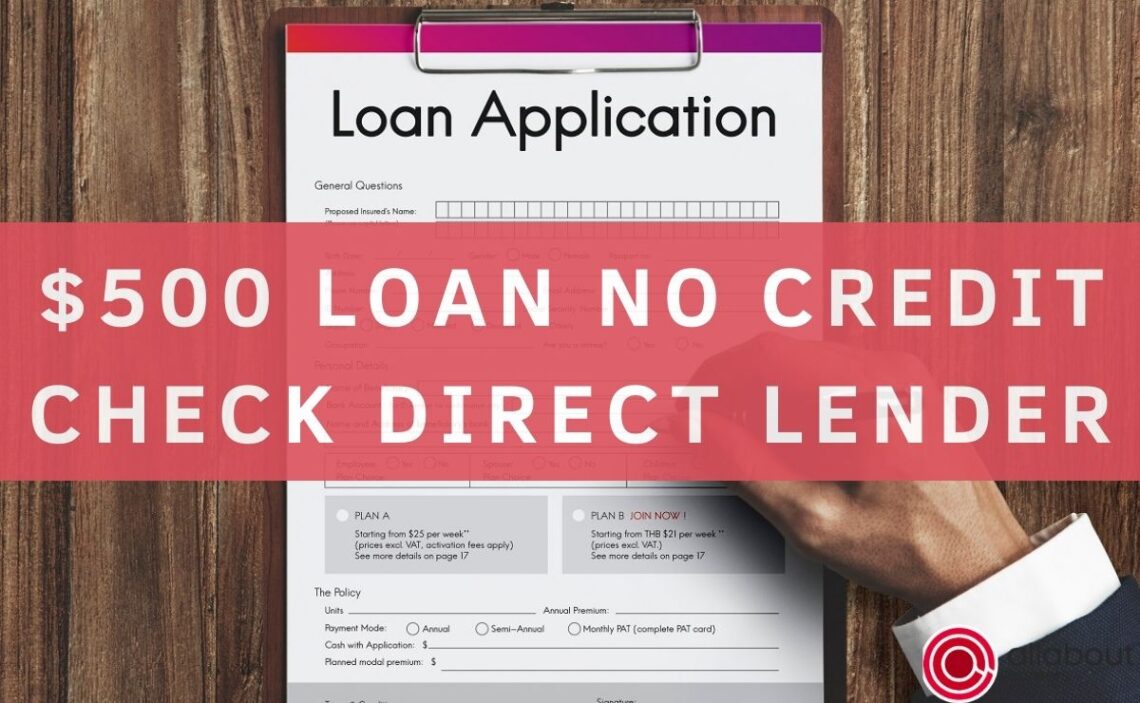$50 Loan Instant No Credit Check Direct Lender

The proliferation of small-dollar, short-term loans continues to spark debate across the financial landscape, with a recent surge in offerings promising quick access to funds, often without traditional credit checks. A notable segment of this market focuses on loans as small as $50, marketed as instant solutions for immediate financial needs.
These "$50 Loan Instant No Credit Check Direct Lender" options, as they are frequently advertised, raise questions about their potential benefits and risks for consumers, particularly those with limited or damaged credit histories.
What Are These Loans?
These loans are typically short-term, unsecured loans designed to provide a small amount of cash quickly. The appeal lies in their accessibility, with lenders often claiming to offer instant approval and disbursement, bypassing the traditional credit check process associated with banks and credit unions.
Direct lenders refer to companies that provide loans directly to borrowers, without the involvement of intermediaries like brokers. This model aims to streamline the application and funding process.
The Allure of "No Credit Check"
The "no credit check" aspect is a significant draw for individuals with low credit scores or a limited credit history. Traditional lenders rely heavily on credit reports to assess risk, potentially excluding a large segment of the population from accessing credit. These alternative lenders often employ different methods of assessing a borrower's ability to repay, such as income verification or bank statement analysis.
However, this doesn't mean there is no evaluation at all. Lenders may check other databases to assess risk.
Potential Benefits
For individuals facing a genuine emergency or an unexpected expense, a small, short-term loan could provide a temporary financial bridge. The speed and convenience of these loans can be appealing in urgent situations.
This is particularly relevant for those who are unbanked or underbanked, who might lack access to other forms of credit. However, responsible use and full awareness of the terms are crucial.
Significant Risks and Concerns
The primary concern associated with these loans is the high cost of borrowing. Interest rates and fees can be significantly higher than those associated with traditional loans, sometimes reaching exorbitant levels when annualized (APR).
This can trap borrowers in a cycle of debt, where they are forced to take out new loans to repay existing ones. The short repayment periods, often within weeks or even days, exacerbate this risk.
The Center for Responsible Lending, a non-profit research and policy organization, has consistently warned about the dangers of predatory lending practices associated with payday loans and similar products. Their research indicates that borrowers often end up paying far more in fees and interest than the original loan amount.
Regulation and Oversight
The regulation of small-dollar, short-term loans varies significantly by state. Some states have implemented strict interest rate caps and other consumer protections to limit predatory lending practices.
Other states have less stringent regulations, leaving borrowers more vulnerable to high-cost loans. The Consumer Financial Protection Bureau (CFPB) has also been involved in regulating the payday loan industry, though the scope and intensity of these regulations have fluctuated in recent years.
Alternatives to Consider
Before resorting to a "$50 Loan Instant No Credit Check Direct Lender," consumers should explore alternative options. These might include asking for assistance from family or friends, seeking help from local charities or non-profit organizations, or negotiating payment plans with creditors.
Exploring options like payday alternative loans (PALs) offered by credit unions can also be beneficial. These PALs typically have lower interest rates and more reasonable repayment terms.
Impact on Society
The widespread availability of high-cost, small-dollar loans can have a detrimental impact on communities, particularly low-income neighborhoods. It can contribute to financial instability, increase debt burdens, and exacerbate existing inequalities.
Promoting financial literacy and access to affordable financial services is crucial to mitigating these negative effects. Responsible lending practices and robust consumer protections are essential to ensuring that borrowers are not exploited.
Conclusion
While the promise of a quick $50 loan without a credit check may seem appealing in a financial pinch, it's crucial to understand the potential risks involved. The high costs, short repayment periods, and potential for debt traps should give borrowers pause.
Exploring alternative options and making informed financial decisions is paramount to protecting one's financial well-being. Consumers should carefully weigh the benefits against the risks before resorting to these types of loans.



